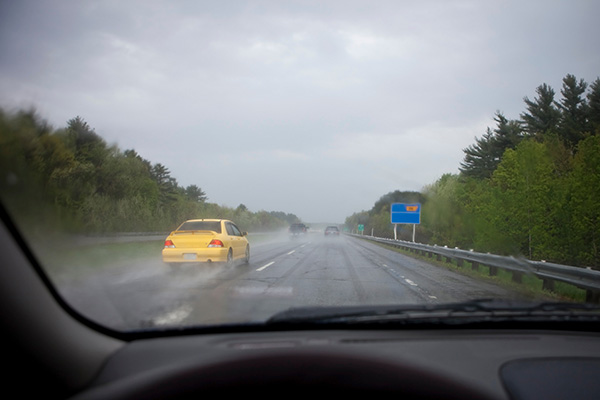
Driving in wet conditions can be daunting, especially when your vehicle begins to lose traction and control. One of the most critical factors in preventing this dangerous scenario, known as hydroplaning, is the condition and design of your tire tread. But how exactly does tire tread help, and what can you do to ensure your tires are up to the task? Let's discuss the role of tire tread in preventing hydroplaning and how you can keep your vehicle safe on slick roads.
The Hydroplaning
Hydroplaning occurs when a layer of water builds up between a vehicle's tires and the road's surface, causing the tires to lose contact with the road. This loss of contact results in a loss of traction, making it difficult or impossible to steer, brake, or accelerate effectively. Hydroplaning is most likely to occur at speeds over 35 mph, but it can happen at lower speeds if the water on the road is deep enough.
The Role of Tire Tread in Hydroplaning Prevention
Tire tread is designed with grooves and patterns specifically to channel water away from the tire surface, maintaining contact with the road. Deeper treads provide more pathways for water to escape, thus reducing the likelihood of hydroplaning. Tread depth and pattern are crucial. Tires with insufficient tread depth or worn-out patterns cannot channel water efficiently, significantly increasing the risk of hydroplaning.
How Tread Patterns Work
Different tread patterns are engineered to handle water in various ways. Directional tread patterns, for example, are designed to push water to the sides, improving water evacuation. Asymmetrical tread patterns combine different designs to optimize performance under various conditions, including wet roads. Understanding the type of tread on your tires and its specific benefits can help you choose the right tires for your driving needs.
The Importance of Regular Tire Maintenance
Regular tire maintenance is essential in preventing hydroplaning. This includes checking tire tread depth, ensuring proper tire inflation, and rotating your tires regularly. Tires should be replaced when tread depth reaches 2/32 of an inch, as indicated by the wear bars that appear when the tread is worn down. Keeping your tires properly inflated according to the manufacturer's recommendations also helps maintain optimal tread contact with the road, further reducing hydroplaning risks.
Choosing the Right Tires for Wet Conditions
Selecting tires designed for wet conditions can greatly enhance your safety. Look for tires labeled as "all-season" or "summer" tires, which are specifically designed to perform better in rainy conditions. These tires often feature deeper grooves and more complex tread patterns to maximize water evacuation and improve traction on wet roads.
The Impact of Driving Habits on Hydroplaning
Your driving habits play a significant role in preventing hydroplaning. Reducing speed in wet conditions, avoiding sudden movements, and steering smoothly can help maintain tire contact with the road. By driving cautiously and being aware of potential hydroplaning hazards, you can significantly reduce your risk of encountering this dangerous situation.
Recognizing and Responding to Hydroplaning
If you find yourself hydroplaning, it's crucial to remain calm. Avoid making sudden movements, as these can exacerbate the loss of control. Instead, gently ease off the accelerator and steer in the direction you want to go. Do not slam on the brakes, as this can cause your vehicle to skid. Allow your vehicle to slow down naturally until you regain traction.
Don't wait for the rain to catch you off guard. Schedule a tire inspection at Kamphaus Auto Care and drive with confidence, rain or shine.